EXHIBITIONS
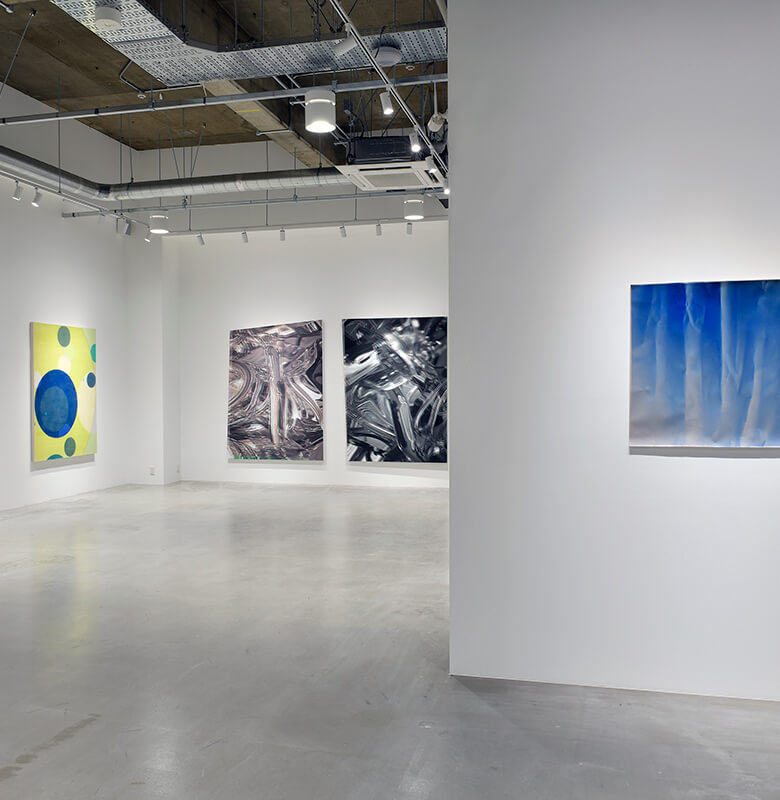
Endless.
-The Changing Landscape, In the Repeating Consciousness-
Boundaries
A circle and a circle
Two-dimensional and three-dimensional
Intention and the unconscious
There is a “space” between everything.
The boundary is determined by consciousness.
Focusing on awareness determines our view, and
When you change your consciousness, the view you see will also change.
A change of scenery repeats itself.
That is what I call
“The never-ending pursuit of beauty”.
The work of Yuki Yamamoto, in which circles are arranged in stacked transparent layers and combined in an optical illusion, is a true work of art.
Yamamoto combines these “circles” in an illusionary manner, that seem to have the potential to go on forever, like pi, intersecting with the viewer’s consciousness.
By intersecting and interfering with the viewer’s consciousness, the work expands the relationship between the two. Through the viewers’ oscillating engagement between the material and immaterial surface, Yamamoto’s work accentuates such a sensory relationship as the vehicle that generates meaning.
Ai Makita’s work depicts mechanical and industrial imagery in a seemingly organic or biological distortion, thus advancing the dichotomy between humans’ experience of the artificial and natural world. Her work is an organic image created by the fusion of the canvas and the real world.
It grows in the viewer’s mind, like a tree becoming a forest.
The works of Reiko Kinoshita, who weaves intentional actions into irreversible phenomena generated by overlapping coincidences
The work of Reiko Kinoshita, which weaves intentional actions into irreversible phenomena generated by coincidental overlapping, drops the artist’s consciousness while framing a moment of time that already exists.
Like light shining on the earth, she continues to make the “buds” of consciousness sprout in the viewer.
The gathered consciousness, thoughts, and feelings of Yuki Yamamoto, Ai Makita, and Reiko Kinoshita, act much like the “Big Bang” that created our universe
By gathering the consciousness, thoughts, and feelings of Yuki Yamamoto, Ai Makita, and Reiko Kinoshita, an invisible power is unleashed in the consciousness of the viewer. I believe that this is our boundary.
Continuing to search for these boundaries may also be a never-ending pursuit of beauty.
I hope that each of you will be able to feel the “beauty” that you dream.
―Artist Statement―
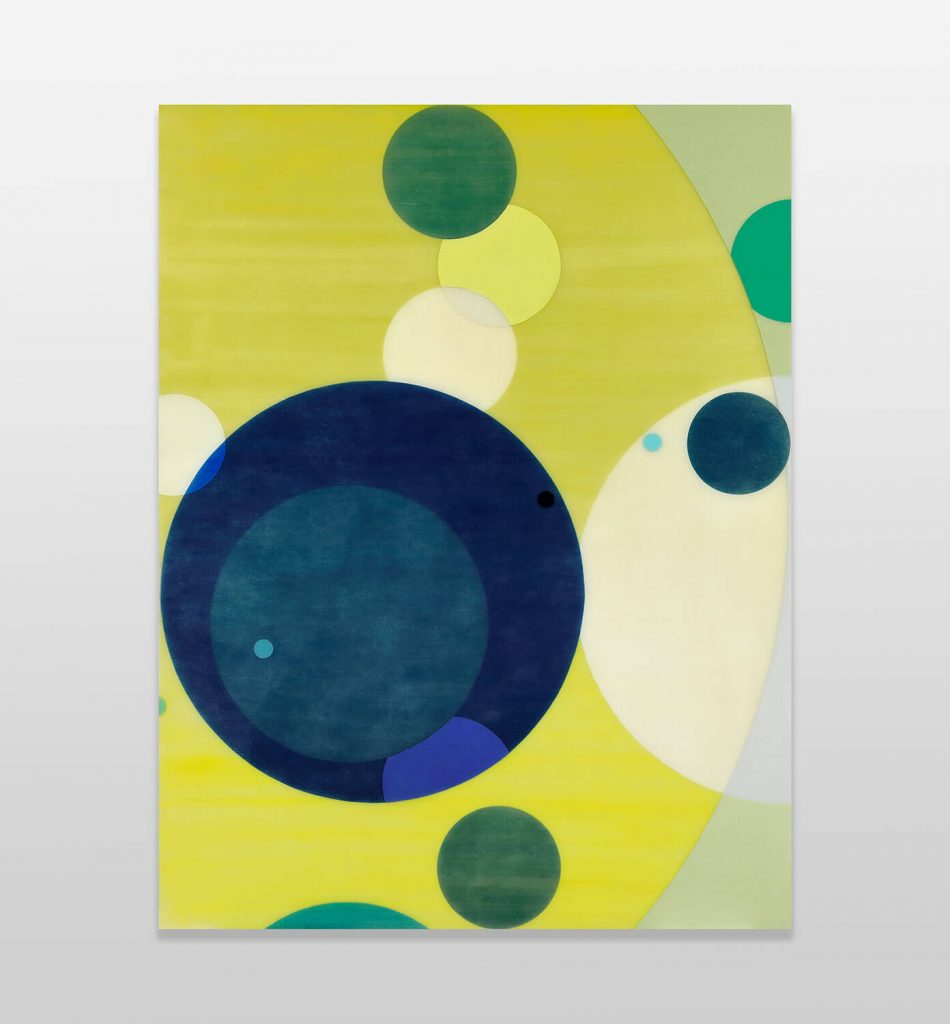
Yuki Yamamoto
There are things in life that you can control and things that you cannot.
When we encounter unexpected external factors, our judgment and behavior can expand our individual possibilities.
We seek to find richness in ambiguous areas that are difficult to recognize.
However, if we remain in ambiguity, we will simply be accepting a half-formed natural state.
I want to make active choices and decisions whilst in the knowledge that sometimes situations will be unreasonable.
Painting is a place for me to directly experience these things, and it is also a place where I can visualize my hopes.
In a multi-level transparent layer, I layer circles of both colour and voids (holes, nothingness, illusion) that are hollowed out of the colour, repeating the intersections of reality and illusion.
The circles located beyond the layers have a relationship with each other, imparting to them either a law or the destruction of said law.
The circle has the strength of an impersonal and fundamental form. It is both a point and a region. It can be a symbol unto which many things can be assigned.
Colours, through their mutual interaction become entities with a myriad of complex interpretations.
Matter always directs me to the outer edges of consciousness.
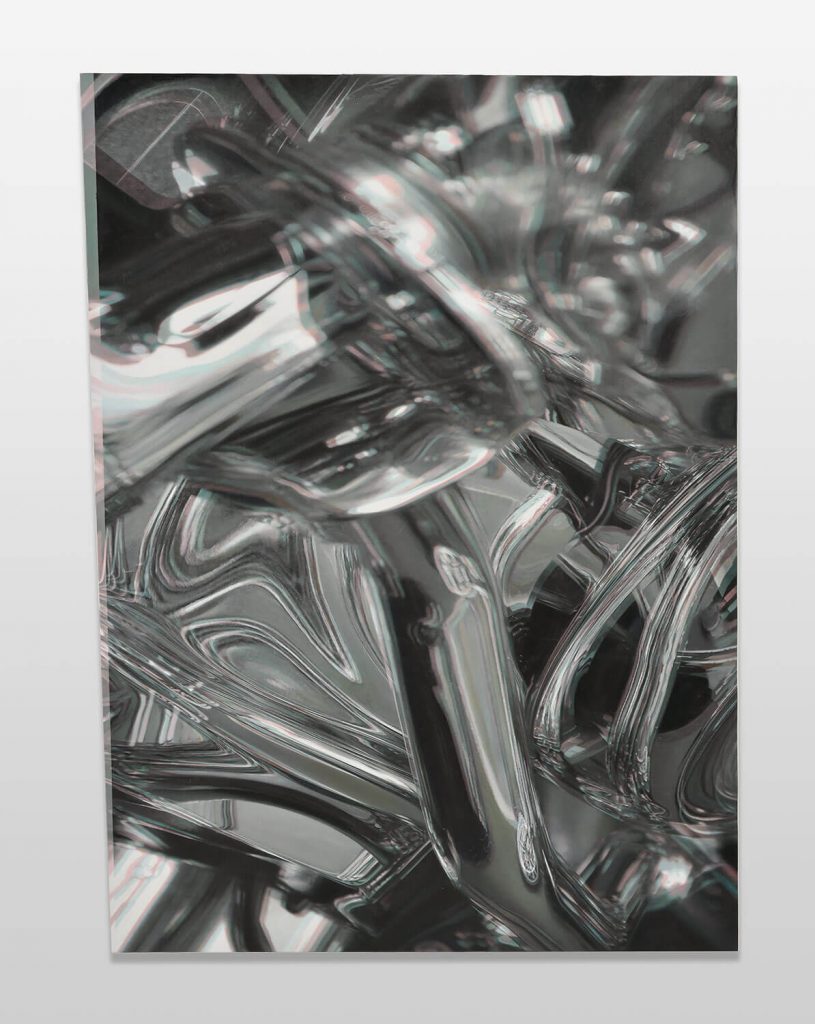
Ai Makita
It’s spring in New York and the virus has wreaked havoc.
The sky as seen from the studio window is clear and cloudless. The trees and plants are budding and the birds are singing happily. The humans are in a panic, but nature and the machinations of the living world continue to flow unchanged.
By witnessing this moment of historic infection, I was able to experience the great dynamism of life and the natural processes that keep it alive.
The world as we perceive it is small. But the world that actually surrounds us is vast, incomprehensible and infinitely deep. Trying to understand this is to gaze toward the sublime, a process often accompanied by fear.
In the limited space of the canvas, I endeavour to create images that extend beyond the limits of perception. Inorganic artefacts symbolize human technology, while nature and living things are represented in both the abstract and realistically. I would like to depict a world where artificiality and nature, as opposing structures, melt into each other.
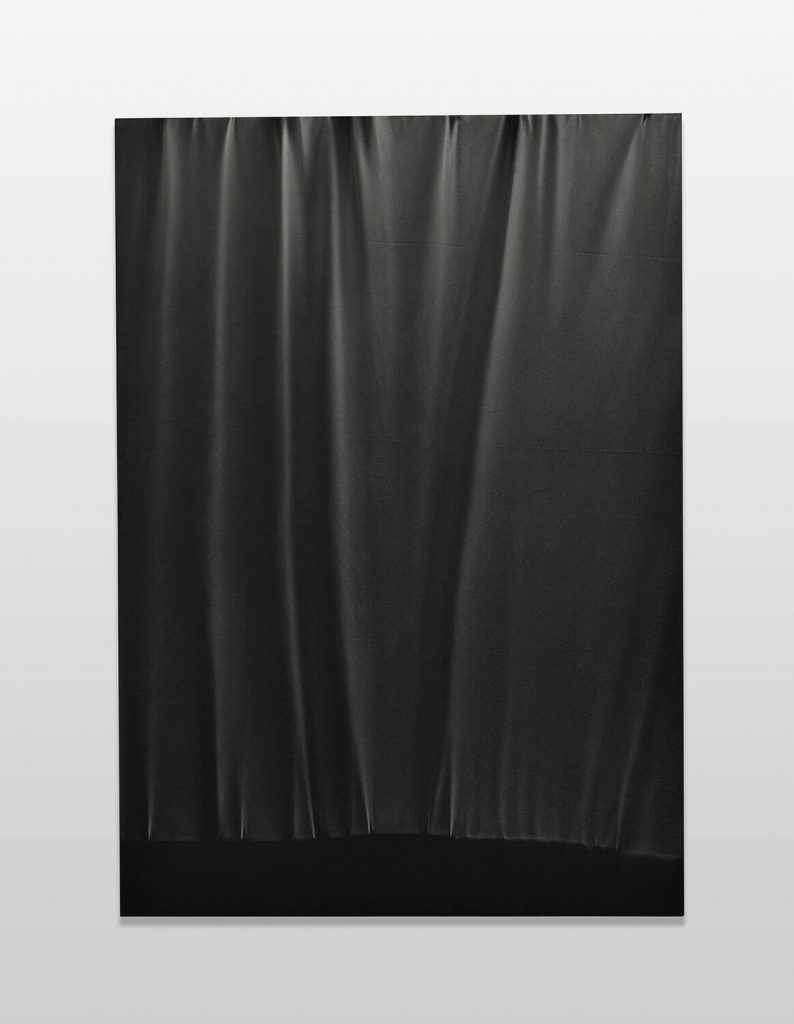
Reiko Kinoshita
I often spread out wrinkled and creased papers and cloths on my desk, not completely new, and spray them with a mist of paint using a spray gun. This process mimics a scene in which sunlight shines upon a mountain range, my original landscape.
When I look around me as if I were looking at a distant mountain with a bird’s eye view, I see that I am surrounded by things that have already been created and have their own nature, purpose and time. I start everything with the idea that there is something, rather than nothing, and I use irreversible wrinkles and folds, sunburn and sensitisation via natural light, words and numbers in books, drawn by time and people, as the gravel for my pictures.
ARTIST PROFILE
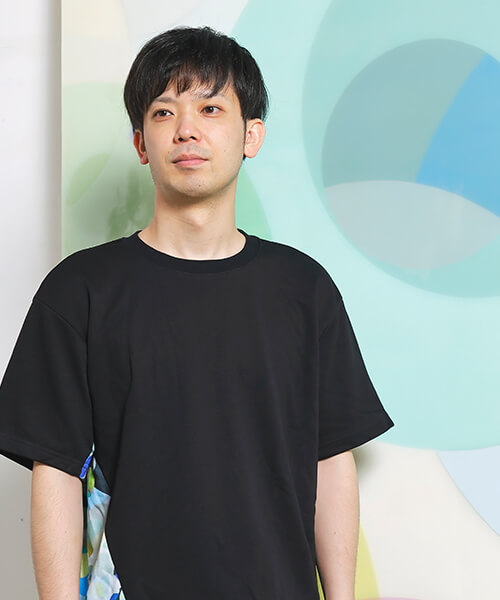
YUKI YAMAMOTO
Born in 1981 in Obihiro, Hokkaido, Japan, Yamamoto completed his graduate studies at the Hokkaido University of Education in 2007.
After receiving a grant from Sapporo City, Yamamoto resided in Berlin from 2012 to 2013. He currently lives and works in Sapporo.
Yamamoto’s works feature interlaced circles in multiple transparent layers.
Through his paintings, Yamamoto reflects upon the oppositional relationships between objects by varying the thickness of layers and the illusionary space of the paintings, as well as the intersections of coloured and hollowed out circles.
Major exhibitions to date include; "PLACE OF HELLO" at the MIKIKO SATO GALLERY(2020), an exhibition at Daikokuya, Itamuro-Onsen (2020), ”Flatten Image” Yuki Yamamoto・Taishi Urakawa Exhibition at Gallery Monma, Sapporo (2019), "2014 VOCA exhibition" at The Ueno Royal Museum, Tokyo (2014), and "Doto Art File 2013" at Obihiro Art Museum (2013) among others.
Yamamoto received the 30th Holbein Scholarship in 2015 and the Grand Prize at the 5th Daikokuya Contemporary Art Competition (Itamuro-Onsen Daikokuya) in 2010. Since 2017 he has been Co-Manager of the Naebono Art Studio.

AI MAKITA
Ai Makita was born in 1985, in Chiba, Japan. Graduated from Tokyo University of Arts, M.F.A. in Art and Education in 2013. Makita is a Tokyo based visual artist who uses artificial objects such as machine, metallic objects and plastics as her motif. She has attempted to create organic images in her paintings by using inorganic motifs. Her main concern is to represent boundaries between artificial and natural, 2D and 3D in her work. She got an M.F.A. of Tokyo National University of the Arts in 2013, her painting was selected for a permanent collection at the Museum of Tokyo National University of the Arts. Recently, she participated in a residency program in New York, and during that period, was selected as an exhibitor at the Consulate General of Japan in New York, where her paintings were exhibited for two months.
Makita has received numerous awards, fellowships, and residency programs, including the Terrada Art Award(Tokyo), Taro Okamoto Award(Tokyo), POLA Art Foundation(Tokyo), ART CAKE (New York) and the Varda Artist in Residency(Sausalito).
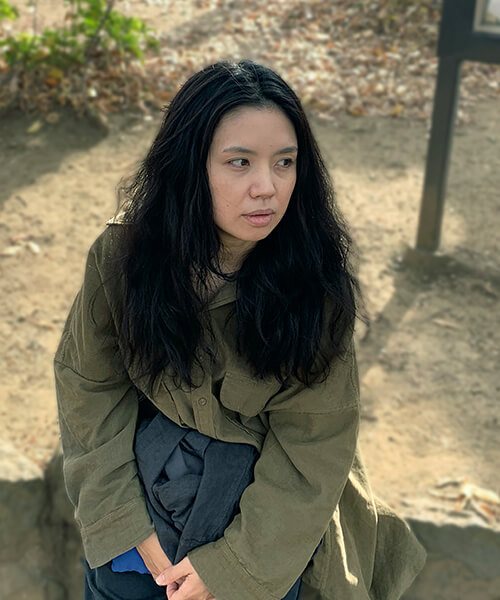
REIKO KINOSHITA
Born in 1982 in Kumamoto Prefecture, Japan, Kinoshita graduated from the oil painting course at Musashino Art University's Graduate School of Art and Design in 2009. Kinoshita's paintings explore the boundary between human intent and the unconscious by utilising wrinkles and folds, light-sensitisation and ageing due to sun exposure. Kinoshita's paintings are created by spraying the paint onto the canvas rather than using a traditional brush technique. In recent years, Kinoshita has been contemplating the question, "Is it possible to capture the passage of time itself in a painting?" and to create works that continue to change after their completion by utilising the shape memory of the object itself. Major solo exhibitions include; "KEI-distant" Crossing/Gifu (2019), "There is evening and there is the morning" LOOP HOLE/Tokyo (2018), "Day behavior" HAGISO/Tokyo (2017), "Fluent device" Switch Point/Tokyo (2017), "Daylight hours" Komagome1-14ca/Tokyo (2016), "A spot in the sun" Kiyosu Haruhi Museum of Art/Aichi (2015), etc. Other exhibitions include "Utsusu" Duo Exhibition - Second2/Tokyo (2020), "Spring-Fever" group exhibition at Komagome Soko/Tokyo (2017), and Kinoshita was the 27th Holbein Scholarship Student in 2012.
OVERVIEW
- TITLE
- Endless.
-The Changing Landscape, In the Repeating Consciousness - DATE
- February 9 - March 27, 2021
- Opening Hours
- 12:00-18:00
- CLOSED
- Sun, Mon, and Public Holidays
- Opening Reception
February 9 17:00-20:00
- ADDRESS
Tokyo International Gallery
TERRADA Art Complex II 2F, 1-32-8 Higashi-Shinagawa, Shinagawa-ku, Tokyo, 140-0002 Japan- ACCESS
- 8 minutes’ walk from Tokyo Waterfront Area Rapid Transit Rinkai Line “Tennoz Isle Station”, 10 minutes’ walk from Tokyo Monorail Haneda Airport Line “Tennoz Isle Station”, 8 minutes’ walk from Keikyu Main Line “Shinbanba Station”
